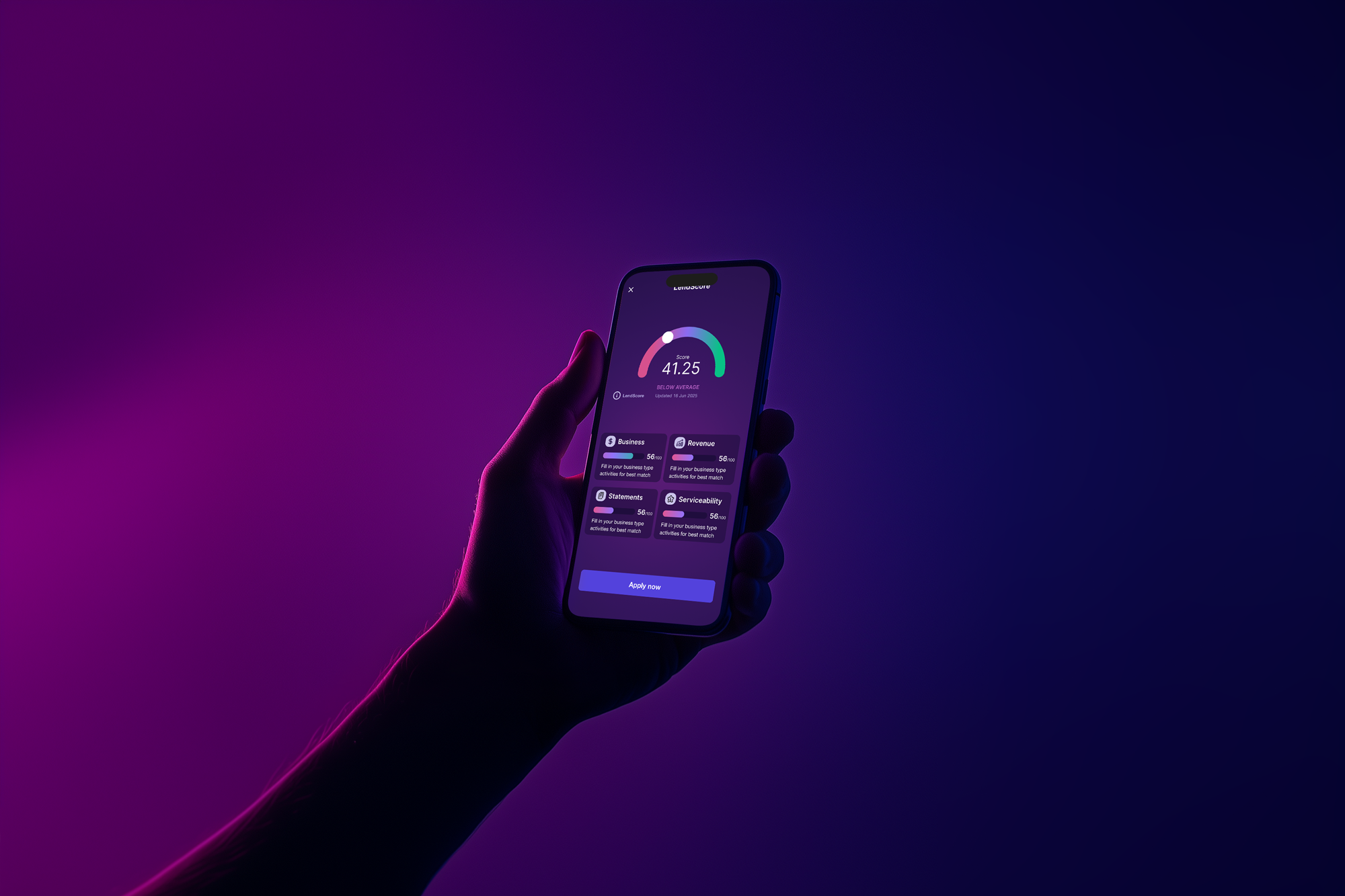Best Business Overdraft Rates 2025 Get Up To $2m
Our LendIQ™ system finds your ideal business overdraft up to $2 million, helping you compare some of the best rates available

Why Compare Business Loans with Lend?
Trusted by Aussies
With over 50,000 loans funded and an 'Excellent' 4.8/5 rating on Reviews.io, we are one of Australia's most trusted platforms for securing business finance.
Free to use
Our comparison service is 100% free. Our mission is to help Aussie businesses find their lowest interest rates.
Safe & secure
Our process does not affect your credit score at all. It's safe to compare with us.
Find Your Best Overdraft Rate Now
Get a competitive rate from over 80 lenders. Enter your desired overdraft amount to see your options in minutes.
Overdraft Amount
A Complete Guide to Business Overdrafts in Australia
This guide explains how a business overdraft works, what it costs, and how to find the best option for your needs.
Updated: 10/20/2025
Business Overdrafts by the Numbers
A business overdraft is a vital tool for managing day-to-day cash flow. Our internal data shows it's a cornerstone of operational stability for Australian SMEs, particularly in service-based industries.
Share of all working capital requests
Average overdraft facility approved
Top industries for requests

What Is a Business Overdraft?
A business overdraft gives you flexible access to funds up to an agreed limit, designed to manage inconsistent cash flow. Think of it as an "always on" financial buffer. You only pay interest on the amount you use, not the entire limit. This puts you in control, making it ideal for covering unexpected expenses or seizing opportunities without paying for funds you don't need.
Secured vs. Unsecured Business Overdrafts
- Unsecured Business Overdrafts: Get funds quickly without using your assets as security. The application process is faster, offering maximum financial flexibility. This is a common choice for small businesses needing quick access to capital. 90% of our clients choose an Unsecured Overdraft.
- Secured Business Overdrafts: Access lower interest rates and potentially higher limits by using assets like commercial property or vehicles as security. If you need a larger facility and prefer reduced costs, a secured overdraft is a significant advantage. 10% of our clients choose a Secured Overdraft.
Business Overdraft Eligibility Checklist
Knowing what providers look for can help you apply with confidence. Here’s a checklist of the usual requirements:
- Active ABN/ACN: Your business must be registered in Australia.
- Trading History: You generally need to be in business for at least 6.
- Minimum Revenue: Most institutions look for a consistent turnover of at least $75,000 per year.
- Australian Resident Director: At least one director must be an Australian citizen or permanent resident.
- Credit History: A good financial score helps, especially for an unsecured overdraft, but options may exist for different profiles.
Essentially, your business generally needs an Australian ABN/ACN, to be operating for at least 6, and meet a minimum turnover requirement. The funds must be for business use. Our LendIQ™ system checks your business details against 80+ providers. This means we can often find options even if you have been rejected elsewhere, expanding your access to vital capital.
How a Business Overdraft Works
A business overdraft provides a revolving line of credit that acts as a flexible funding source you can draw from, repay, and draw from again as your cash flow changes. This provides a critical financial buffer for any working capital need, from covering unexpected costs to paying suppliers while waiting on invoices.
- Borrow from $5,000 to over $2,000,000
- Loan terms from 3 months to 5 years
- Weekly, fortnightly or monthly repayments
- Interest only on funds you use
- Secured and unsecured options available
- Business loan interest and fees may be tax deductible
What Impacts Your Financing Costs?
The rates offered by a provider reflect their assessment of your business. Several key factors influence the final variable interest rates, which typically range from around 9.95% to 30% p.a.
- Security Provided: A secured overdraft, backed by assets like property, represents lower risk to providers and attracts more competitive rates. The average approved limit for an asset-backed overdraft is $130,000.
- Business Trading History: A longer track record of consistent revenue demonstrates stability and may lead to more favourable loan terms. Most lenders prefer a business to be operating for at least 12 months.
- Credit History: Providers assess the financial reports of both the business and its directors. A strong history is crucial for securing the best rates.
- Industry and Revenue: Businesses in stable industries with consistent, verifiable turnover are often viewed more favourably.
Your Business Overdraft Questions

You can use a business overdraft for almost any legitimate purpose, including managing cash flow, buying stock, covering working capital gaps, and paying contractors or suppliers.
It depends on your needs. An overdraft is ideal for ongoing, fluctuating cash flow requirements. A term loan is generally better for large, one off purchases like equipment, as it typically offers a lower financing cost.
Making initial enquiries or using comparison services generally does not impact your credit score, as these are 'soft' checks. A 'hard' check is only performed when you submit a formal application to a specific provider.
The terms are often used interchangeably. Historically, an overdraft was linked to a business banking transaction account, while a business line of credit was a standalone product. Today, they function in much the same way.
While possible, it's often not the most cost effective option. An overdraft is perfect for short term needs. A dedicated equipment loan will almost always offer a lower cost for a large, long term asset.
Costs, Fees & Repayments
Understanding The Costs: Business overdraft interest rates typically range from 9.95% to 30% p.a., varying by the institution and whether security is provided. Overdraft interest is calculated daily only on the funds you have drawn. Our experts help you navigate these costs to find your best deal, ensuring you understand all associated pricing and any potential overdraft fees.
Common Fees to Expect:
- Establishment Fee: A one time charge when the overdraft is set up (typically 0.75% to 4% of the limit).
- Line Fee: An ongoing fee for maintaining the unused portion of your facility (around 1% p.a.).
- Service Fee: A flat monthly fee that may apply.
- Annual Review Fee: Charged if your limit is reviewed yearly.
- Discharge Fee: Applies if you choose to close the account.
- Outcome: Lend's specialists ensure full transparency on all fees upfront, so you avoid hidden costs and understand the true cost of your facility.
Flexible Repayment Terms: Overdraft terms usually range from 3 months to 5 years, with open ended arrangements also possible. Repayments are typically weekly or monthly for businesses with a turnover under $5 million, offering flexibility that aligns with your business cash flow cycles. We help you find terms that work for your business model.
Helpful Finance Tools
Overdraft Benefits & Considerations to Make the Right Choice
Pros
• Your Financial Freedom
- Cost Efficient: You only pay interest on the exact amount of funds you use.
- Ultimate Flexibility: Use funds for any business expense, including inventory, salaries, marketing campaigns, or unexpected emergencies.
- Seamless Access: Can be linked directly to your business account or set up as a convenient standalone facility.
- Easy to Close: Cancel your facility anytime once the outstanding balance is repaid.
Cons
• What to Be Aware Of
- Higher Cost Than Term Loans: These options generally have higher interest rates and fees compared to traditional business loans because of their flexibility.
- Not for Long Term Purchases: An overdraft is best for short term cash flow management, not major asset purchases.
- Fees Can Accumulate: Be aware of potential account keeping and usage fees. We help clarify these to prevent surprises.
- Lender Can Cancel Facility: Providers can cancel your overdraft if the terms of the agreement are breached. We help ensure you fully understand your commitments.
Your Top Questions, Answered
You can typically access between $5,000 and $2 million. Your specific overdraft limit is based on your business's revenue and financial history. The median funded overdraft through Lend is $90,000.
Historically, lines of credit were standalone products, while overdrafts were linked to bank accounts. Today, the terms are often used interchangeably, with many non-bank providers offering standalone overdrafts that function like a line of credit.
An overdraft is ideal for covering larger cash flow gaps and short term expenses, often providing bigger limits. Business credit cards are better for everyday operational spending and earning rewards, but usually have higher interest rates.
Yes, it is possible. Non-bank financial institutions available through Lend are often more flexible than traditional banks. While your initial borrowing capacity might be lower or the interest rate higher, our system finds the providers most likely to approve your application, giving you viable options. In fact, 60% of our approved overdrafts go to clients who have a managed ATO debt.
test
No content available
No content available
No content available
Should you choose a secured or unsecured business loan?
This is one of the most common questions business owners face when seeking a loan. An unsecured business loan is a popular choice. The answer depends on your priorities: cost versus speed.
An unsecured loan's main advantage is speed. Because no collateral needs to be valued, the process is streamlined, and funds can often be available within 24-72 hours. This makes it ideal for urgent needs like covering an unexpected bill or seizing a time-sensitive opportunity. However, the lender takes on more risk, so the interest rate is higher.
A secured loan, on the other hand, uses an asset (like property or equipment) as security. For any secured business loan, this significantly reduces the lender's risk, which means they can offer a much lower interest rate. For a business with a strong financial profile, securing a loan with residential property can result in an interest rate up to 30% cheaper. The trade-off is a longer application process, as the asset needs to be formally valued. This option is best for large, planned investments where minimising the total cost of the loan is the primary goal.
Choose Your Loan Structure: A Strategic Comparison
Pros | Cons | |
|---|---|---|
Unsecured Loan |
|
|
Secured Loan |
|
|
Line of Credit |
|
|
Recent Articles
You might also like
What Happens After Your Loan Has Been Approved
Congratulations! The final steps are fast and digital. Your lender will send you the loan documents for electronic signing. Once you have reviewed and signed, funds are typically transferred directly to your account. For most loans, this happens on the same day. Your finance specialist remains available to you, ensuring a smooth conclusion to your funding journey.
Ready to Find Your Rate?
Find your single best loan match in minutes. Let our intelligent system do the work for you when you need to compare business loan interest rates
How much would you like to borrow?
Recent Articles
You might also like
Stories From Successful Business Overdraft Facilities

No content available

No content available

No content available
Get Competitive Business Overdraft Rates in Minutes
Enter your desired amount below to instantly compare 80+ providers and secure the best overdraft for your business. We help you find a competitive business overdraft.
Enter your desired amount
